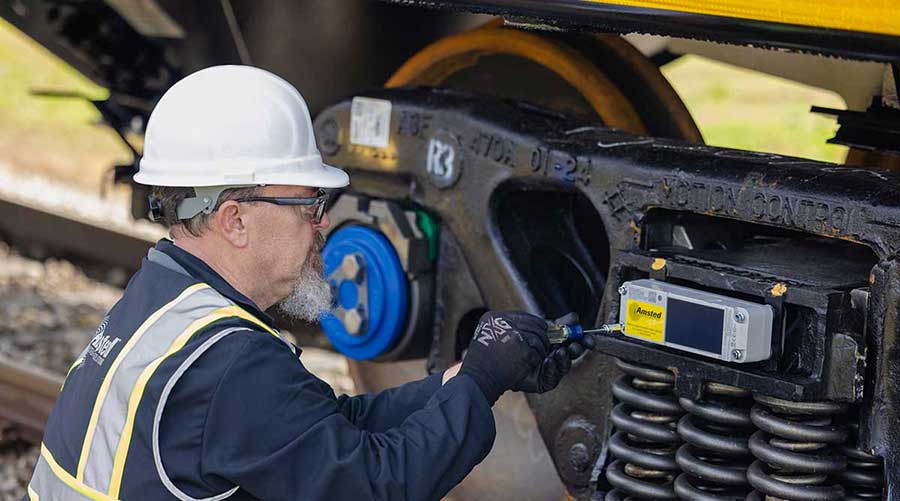Stay updated on news, articles and information for the rail industry
October 2016
Part 1 : Election 2016: What's at stake for rail?
Part 2 : APTA: Local elections put transit funding to the test
Rail News: Rail Industry TrendsElection 2016: What's at stake for rail?

By Progressive Railroading Staff
When Vice President Joseph Biden announced a $2.45 billion federal loan for Amtrak on Aug. 26, he expressed his frustration about long-snarled efforts to bolster and modernize rail systems in the United States.
“Why in this country are we so boneheaded to not understand the essential value of a rail system that is modern throughout the whole country? Why do we argue about whether or not it makes sense?” he queried. “We can’t make this country work without rail.”
Those questions could be addressed or ignored by the next administration and new Congress, meaning the Nov. 8 national elections will have a significant impact on whether freight- and passenger-rail systems make strides, stand pat or slip backward over the next four years. As the elections neared, it wasn’t clear to rail industry stakeholders which of the three was the more distinct possibility.
“It’s tempting to get distracted by the ‘bright shiny object’ that is this year’s presidential campaign. However, it’s difficult to decipher much rail-related information from all the noise surrounding partisan wedge issues, even more so with this campaign cycle,” says Jim Mathews, president and chief executive officer of the National Association of Railroad Passengers.
So, anxieties are high among many rail constituents about how a number of key issues might swing after the 115th Congress takes office Jan. 3 and the 45th president is inaugurated Jan. 20. Among them: infrastructure spending, rail funding, Amtrak’s federal allocation, economic growth, rail regulation and free trade.
The heightened state of uneasiness has been magnified by the uncertainty surrounding the national elections and the winning politicians’ potential position on rail.
“There’s the question of which candidate is better for railroads. That has to play out. It depends on the issue,” says American Short Line and Regional Railroad Association President Linda Darr.
But at least one thing is certain: The major political party winners will have an opportunity to exert their influence on many issues in the U.S. government’s executive and legislative branches in the years to come. Since the strength of that influence on rail-related issues is up for debate, pre-election discussions among industry constituents have been lively, to say the least.
To learn where various constituents stand on the issues and election implications as voters prepared to make their voices heard at the polls, Progressive Railroading reached out to 10 rail industry stakeholders, including the House Railroads, Pipelines and Hazardous Materials Subcommittee chair, a Class I leader, an Amtrak executive, a labor union legislative director and the heads of several associations.
Our what’s-at-stake-for-rail questions and their answers — mostly obtained via interviews and emails — are featured here. Plus, American Public Transportation Association and transit agency execs review Nov. 8 ballot measures and express their concerns about federal passenger-rail funding in this piece. In addition, this online version of our Oct. issue cover story includes longer responses and feedback from a few more stakeholders that weren’t included in the print version.


 2025 MOW Spending Report: Passenger-rail programs
2025 MOW Spending Report: Passenger-rail programs
 Gardner steps down as Amtrak CEO
Gardner steps down as Amtrak CEO
 Guest comment: Oliver Wyman’s David Hunt
Guest comment: Oliver Wyman’s David Hunt
 Women of Influence in Rail eBook
Women of Influence in Rail eBook
 railPrime
railPrime






